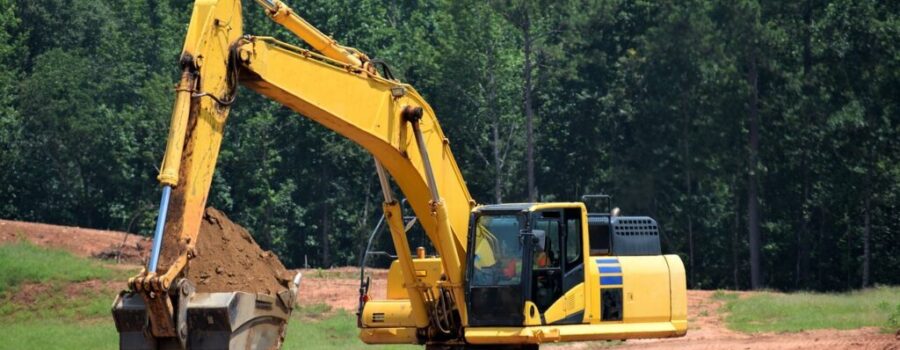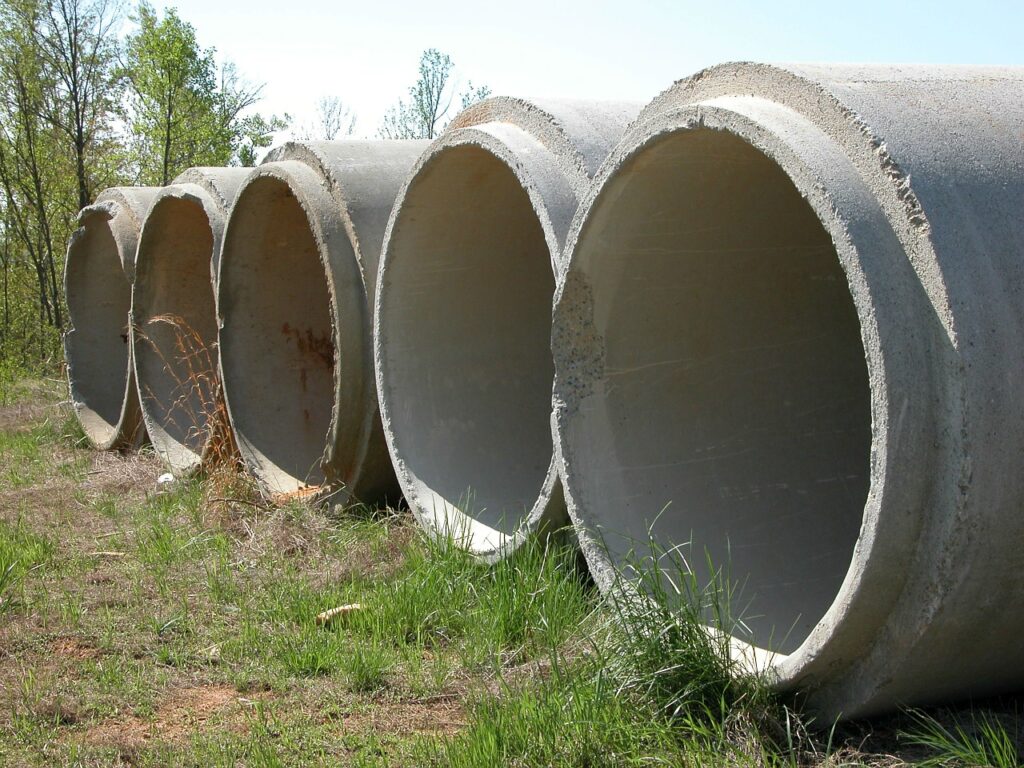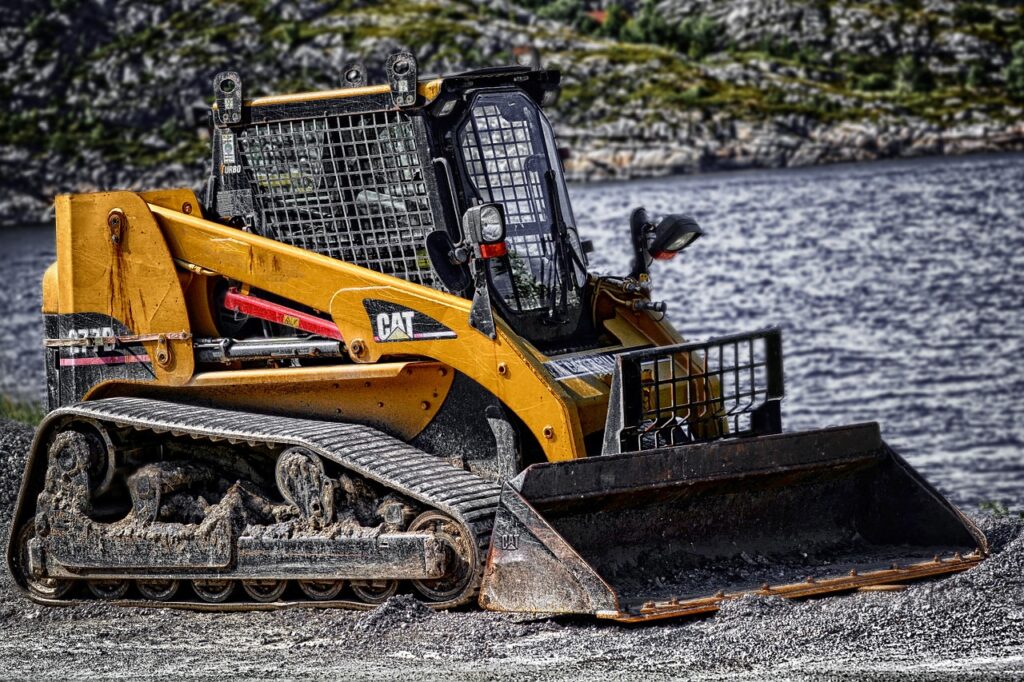
Grading Permits for Grading Land
When you’re constructing a new property, grading land is among the most important processes that you will likely need to complete. Grading means making any kind of ground-level for the purpose of constructing a new building. While grading typically involves making a piece of land flat, it can also involve altering a sloping piece of land, which may be necessary when attempting to grade a driveway.
Keep in mind that you must first obtain a grading permit before performing this particular process. Once you have obtained this permit, you can work on private property with paving or grading activities. There are many different types of land grading that you should be aware of before you attempt to perform the grading process. These types include everything from topsoil installation to surface smoothing.
If you’re constructing a property within a baseline hillside ordinance, it’s important to understand how land grading works in this specific area. In the event that the grading process within a baseline hillside ordinance involves a piece of land that’s 5,000 cubic yards or more in size, the project itself will be referred to as “engineered grading”, which is necessary since the grading plan is created by a civil engineer.
On the other hand, performing the grading process on land in a baseline hillside ordinance that’s smaller than 5,000 cubic yards in size will result in the project being designated as regular grading, which comes with less stringent requirements. This article is a comprehensive guide that explains everything you need to know about the process of grading land.
Key Takeaways:
- Land grading is the process of making something ground level when constructing a new building, driveway, etc.
- A grading permit is required in many situations, but is largely dependent on your county.
- There are five types of land grading we discuss below as well as various factors you may need to consider when beginning your project.
When is a Grading Permit Required?

There are numerous situations when a grading permit may be required, which largely depends on the regulations in Los Angeles County or the county that you live in. The grading requirements in California are extensive, which is why it’s important that you understand everything about the work that you want to do before applying for a permit. Grading is a process that involves the modification of any existing topography for a property, which can include everything from excavating to removing vegetation from the site. The grading process is commonly used in such projects as:
- Demolition
- Landscaping
- Hillside construction
- Landslide mitigation
- Basement construction
- Flood zone mitigation
- Infrastructure construction
- Hazardous material remediation
- Seismic hazard zone mitigation
If grading is performed in any of these projects, a grading permit will be required. There are many different regulations that play a part in the permitting process. These regulations include:
- Tree protection
- Bonds
- Work hours
- Shoring design
- Rainwater containment
- Dust control
- Waterway protection
- Notification to the adjoining property owner
- Adjoining property easements
This type of permit also involves drainage regulations, which are essential to adhere to for anyone involved in the land-grading process. Everyone who performs this type of process must show the LADBS that slope drainage and erosion will be effectively controlled. All existing drainage on the property in question must be maintained for the project to be permitted.
Types of Land Grading
There are numerous types of land grading that you should be aware of before starting this process. The reason that there are different types of land grading is that every piece of land is unique in regards to its vegetation, natural grading, and soil makeup. Every property owner will also want to use the land for different purposes. The various types of grading are discussed below.
Drainage Solutions

Among the most important aspects of any land-grading process is drainage. You can ensure that the area is properly drained by placing draining pipes within the ground or by grading sloped land for the purpose of carrying water downhill, which ensures proper drainage.
Excavation
While grading commonly involves filling holes in and placing dirt in new locations to increase the height of the area for a flattened surface, it can also involve digging a hole through excavation. If you need to create the basic foundation for a road or structure, excavation may be necessary.
Surface Smoothing
It’s important to understand that even a portion of land that appears to be flat is still uneven, which is why the land-grading process is necessary in many situations. When you smooth out a piece of land, you will be able to control every facet of how a building is constructed without needing to worry about taking differing slopes into account.
Bobcat Machinery

Bobcats are powerful and highly versatile machines that have the ability to move and scoop dirt when necessary or use an entirely different attachment in order to smooth out and flatten the land. The versatility of a Bobcat makes it ideal when performing any kind of grading work.
Topsoil Installation
It’s possible that the land you’re working on can’t be properly graded because there isn’t enough dirt in the surrounding area. If this is the case, you might be required to bring in and install some additional topsoil from a completely different site. Topsoil is also highly beneficial when used as the foundation for the growth of plants.
No matter which type of grading you wish to perform, it’s important that you have the right grading permit in hand that will allow you to continue working on the project.
Factors Involved in the Grading Process

When you want to grade land on your property, there are many cost factors that you should consider to make sure that the budget for the project doesn’t spiral out of control. The main two factors that determine how much the project will cost include your choice on whether to complete the project yourself or to hire someone separately and the size of the area that needs to be graded. If you decide to grade the land on your own, the costs associated with the project could be as low as $100. On the other hand, hiring a professional to do the job typically costs upwards of $1,000-$1,500. The additional cost factors that you should take into account include:
- Land assessment – A land surveyor will need to come in to perform a land assessment, which determines if alterations to the land would adversely affect neighboring properties. The costs of hiring a land surveyor could be anywhere from $200-$500.
- Characteristics and quality of soil – The type of soil on your property can dictate how much the project will cost to be completed. For instance, thicker soil is more difficult to alter with the land-grading process than loose soil, which will change the costs. If you need to use any large equipment, the costs can easily add up.
- Overall size of yard – Larger yards need more soil for the completion of a grading project. This also means that the project itself will take longer to complete, which will play a part in how much you spend when grading your yard.
- The amount of damage that has occurred on the land – If the foundation of your property has already been damaged in the past, the land-grading process may be necessary to get the property up to code and to prevent additional damage. In fact, extensive damage usually comes with the requirement that the area be re-sloped.
- Erosion control – Soil changes and shifts over the years, which heightens the possibility that issues occur and erosion eventually starts to take place. In order to effectively control the erosion of soil, it’s recommended that you install metal edging or braces to keep the soil where it should be.
- Whether you do it yourself or decide to hire a professional – As touched upon previously, grading land costs significantly more to perform when you hire a professional as opposed to doing it yourself. However, professionals are also much less likely to run into costly problems that will take time and money to fix.
The timeline for land-grading projects depends on how severe the issue is and how much work must be done. If you only need to add a small amount of soil, the project may not take longer than a few hours to complete. On the other hand, it’s possible for the project to take as long as 1-2 weeks to be completed in the event that heavy machinery is required.
The Grading Permit Process
The grading permit process involves some simple steps that you should be aware of. If all that you require is a standard grading permit, the documentation, and materials that you must have when sending in an application can be found at this link. The primary application materials that are necessary for this permit include:
- Preliminary grading plans
- A copy of the parcel map
- A copy of the current grant deed
- Grading design standards forms
- Evidence that displays the creation of the lot
- Completed questionnaires on hazardous sites and well information
The application that you fill out should then be submitted through the LADBS or the building department in your county. If the grading project is larger than is allowed by the small grading permit, additional approval will be needed from the LADBS. It’s also possible that you will be asked to provide some extra application materials pertaining to the project. Once conditional approval has been given, the full engineering plans will be received to make sure that they conform to every guideline and requirement.
Grading land is a highly important task that must be completed for any number of projects. Whether the project is large or small in scope, it’s important that you take the steps necessary to obtain a grading permit before you start working on the project. Without this permit, you may be asked to reverse all of the work that you’ve finished to this point, which would be costly and time-consuming.

Jason Somers, President & Founder of Crest Real Estate
With over 15 years of professional experience in the Los Angeles luxury real estate market, Jason Somers has the background, judgement and track record to provide an unparalleled level of real estate services. His widespread knowledge helps clients identify and acquire income producing properties and value-ad development opportunities.
Learn more about Jason Somers or contact us.



